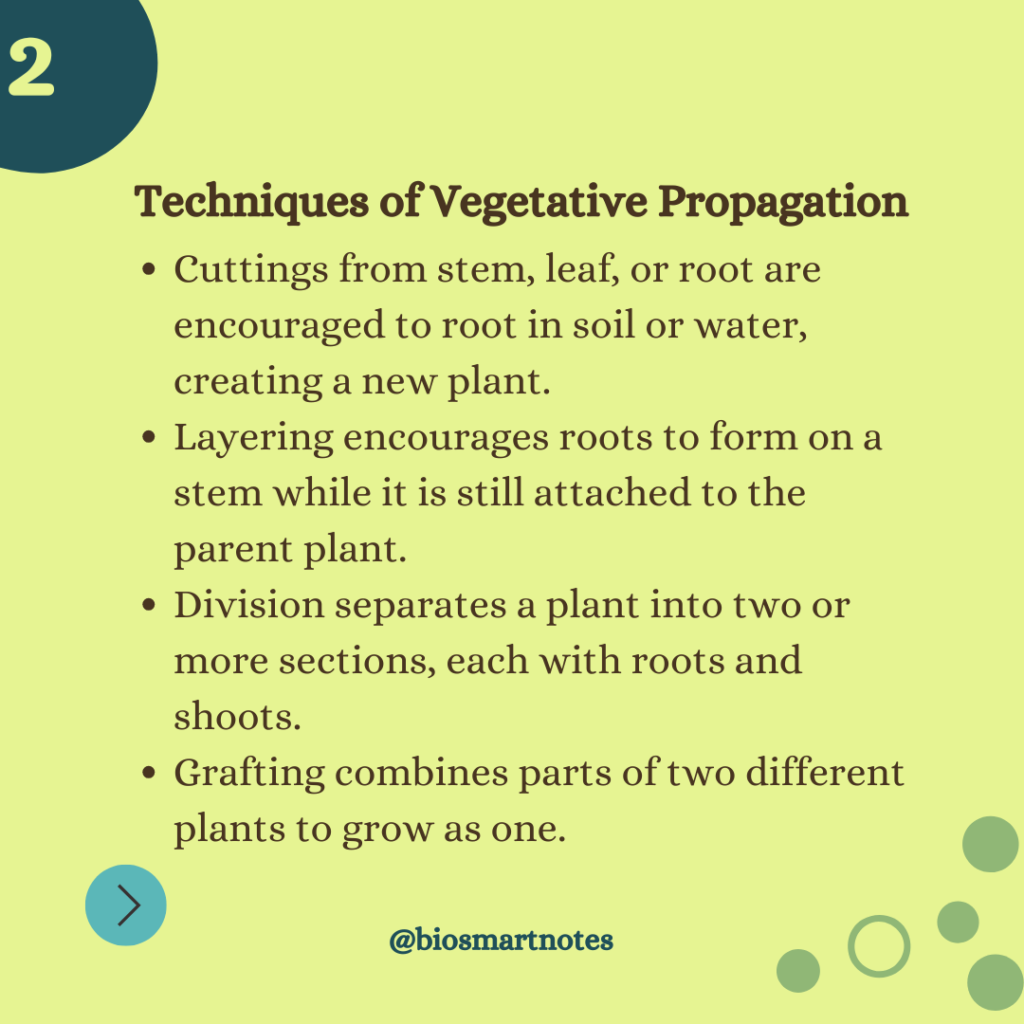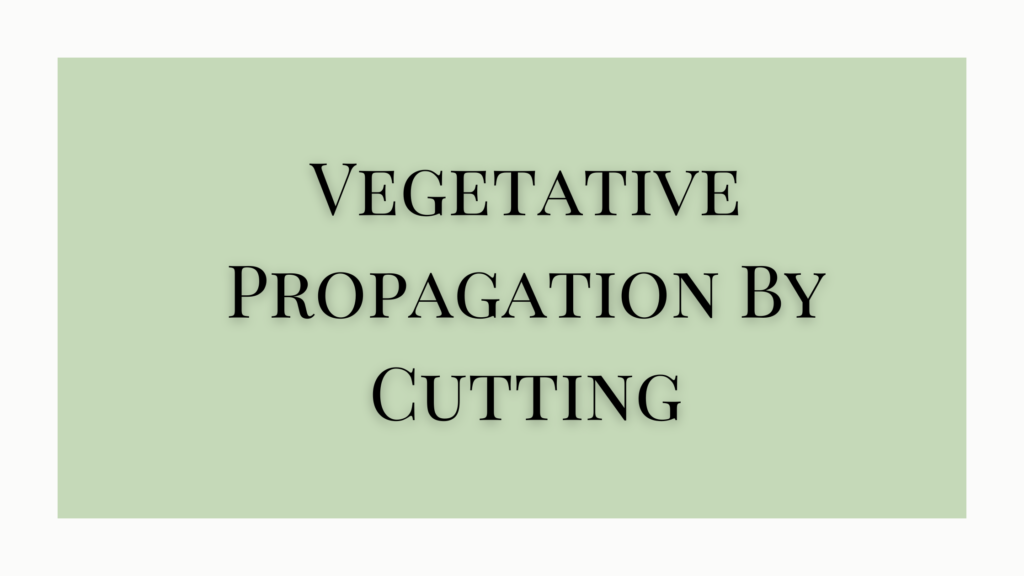Vegetative propagation by cutting is the process of propagating plants using vegetative parts cut from the plant, which can develop into a complete plant. Detached stem with or without leaves is called stem cutting. Similarly, the detached roots are root cuttings, from leaves, it is called leaf cutting. There also are leaf bud cutting and different subcategories within the stem cutting itself.
Types of Vegetative Propagation by Cutting
Plant cuttings can be classified according to the plant part used. The various types of cuttings used for propagation are listed below.
- Stem cuttings
- Hardwood cutting
- Semi-hardwood cutting
- Softwood cutting
- Herbaceous cutting
- Leaf cuttings
- Leaf bud cuttings
- Root cuttings
While selecting cutting materials, it is important to stock plants that are free from diseases, moderately vigorous, and of known identity.
Stem Cuttings
- Hardwood Cuttings
Hardwood cuttings are taken from mature stems during the dormant season which is mostly winter or early spring season.
The size of hardwood cuttings varies considerably from 15 to 22 cm in length. These cuttings should have at least two nodes. Usually, the basal cut is made below a node and the top cut will be 1 to 3 cm above another node. The thickness of the stem should be about a pencil thickness.
There are three types of hardwood cutting- straight, mallet, and heel cuttings. A straight cut is cut from a plant without any base. Mallet cut includes the base of the old stem while the heel cut retains some part of the old stem.
Leaves are removed from the cuttings and they are kept under shade. Rotting will take place within 45-60 days. Examples are grapes and pomegranate.
- Semi-hardwood Cuttings
Semi-hardwood cuttings are taken from partially matured wood. The stems will be relatively firm but will still be flexible enough. The cuttings are usually taken in the late summer, and early fall seasons so that the new stems are longer and stronger. Cuttings are usually taken from broad-leaved evergreen species.
These cuttings will be 7-15 cm in length, with leaves at the upper end. The leaves from its lower end will be removed. In the case of larger leaves, their size is reduced to minimize water loss.
The cuttings will be planted in a rooting medium with a two-thirds portion inserted in it. They are placed under shade and watered daily. Eg. Pepper, Croton, Nerium, etc.
- Softwood Cuttings
As the name suggests, softwood cuttings are taken from the softer section of the stems of deciduous shrubs during the summer season. These are generally easier and quicker than other types of cuttings. These cuttings will always have leaves attached to them. They are delicate and must be handled with extreme care to prevent drying.
It is also important to obtain the proper plant material from the stock plant. The cuttings should be 7-12 cm long with at least two internodes. The basal cut should be right under a node to ensure rooting from the node. The lower leaves are removed along with any flowers or flower buds, retaining the crown leaves.
The cuttings are planted in a planting medium containing sand and soil mixture and kept under shade. Watering is done daily but moderately. Roots will emerge within 4-5 weeks. Eg, Spinach, Coleus, etc.

Leaf Cutting
Many plants with thick and fleshy leaves can be propagated by leaf cuttings. In some cases, the leaf is detached from the parent plant and planted vertically in a suitable medium with its petiole and half of the leaf properly covered.
Adventitious roots develop from the base, usually from the petiole. The roots arise normally from the parenchyma cells of the vascular cambium. Eg. Peperomia, Sansiveria, Bryophyllum, etc.
Leaf Bud Cutting
This type of cutting includes the lea bud, petiole, and a small piece of the stem with an attached axillary leaf bud. This is usually a single-node cutting. Only matured leaves are selected for this type of cutting. The leaf bud cuttings are kept under the shade and are watered regularly.
Root Cutting
Cutting of roots varies widely with different species. The roots are cut in 5-15 cm length. They are cut in the early winter, stored in the sand, and allowed to produce a callus. Later, they are planted out in the open in the following spring. Planting is done after the development of a shoot system from the adventitious roots.
Rooting Media
Several types of rooting media are used in the preparing beds into which the cuttings are to be planted. Any medium used should be loose and must be easy to facilitate the planting of the cuttings.
It should fairly retain moisture with a well-developed drainage system. The medium should be devoid of microbes to avoid bacterial or fungal contamination. The soil should include sand, loose sandy loam, peat moss, and vermiculite.
Handling of Cuttings After Rooting
Rooted hardwood cuttings are usually dug during the dormant season after the leaves are dropped. Fast-growing types are to be dug after growing for one season. The digging should occur on a cool and cloudy day, without wind.
After the plants are dug, they should be quickly transported to a convenient location or replanted to their permanent location. Nursery plants are planted, closed together in trenches with roots well covered.
The plants are carefully hand-pulled with soil mass around their roots. If the plants are to be kept for a prolonged period, they should be watered several times with nutrient solution. The rooted cuttings should be watered thoroughly, shortly after potting.




